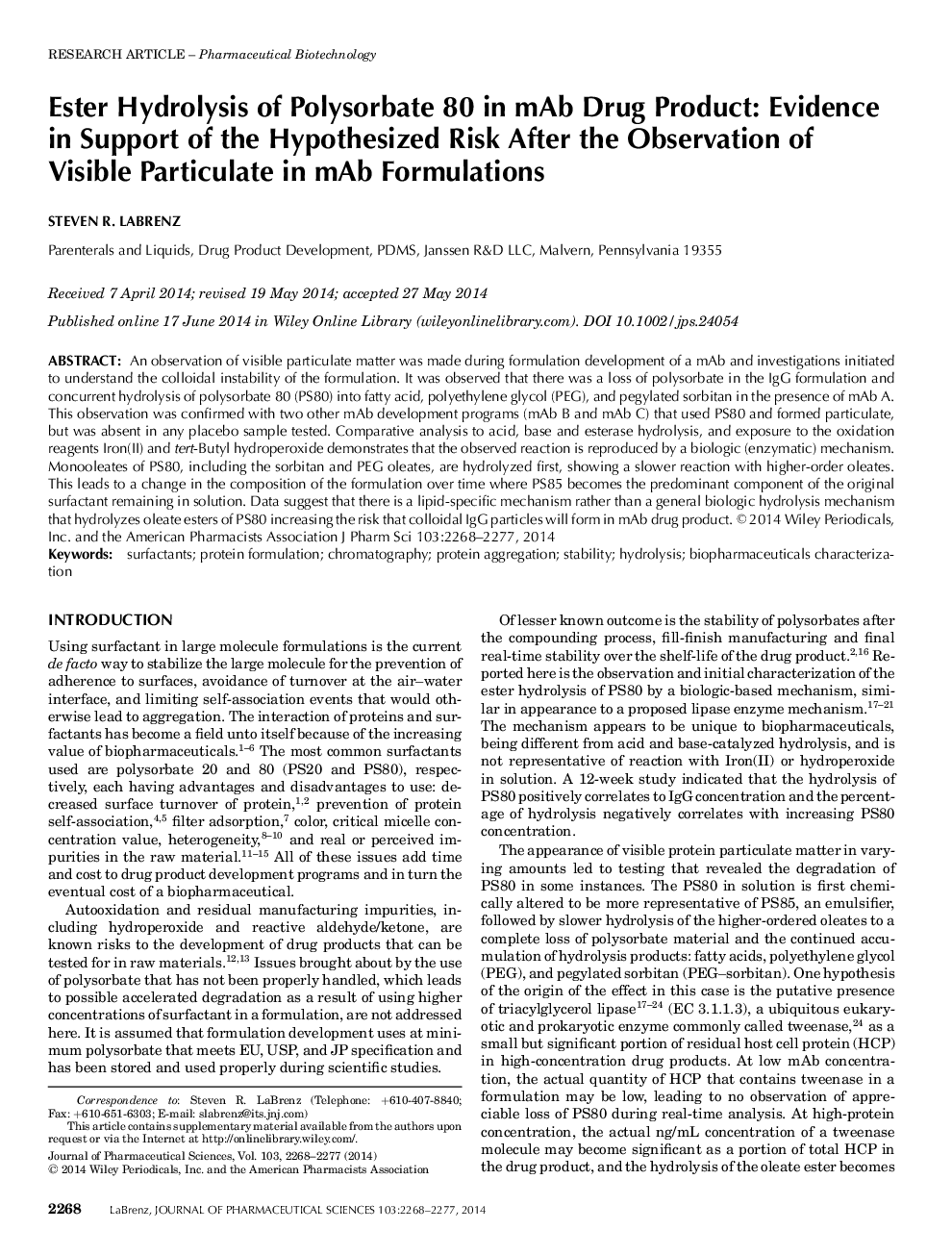| Article ID | Journal | Published Year | Pages | File Type |
|---|---|---|---|---|
| 10162287 | Journal of Pharmaceutical Sciences | 2014 | 10 Pages |
Abstract
An observation of visible particulate matter was made during formulation development of a mAb and investigations initiated to understand the colloidal instability of the formulation. It was observed that there was a loss of polysorbate in the IgG formulation and concurrent hydrolysis of polysorbate 80 (PS80) into fatty acid, polyethylene glycol (PEG), and pegylated sorbitan in the presence of mAb A. This observation was confirmed with two other mAb development programs (mAb B and mAb C) that used PS80 and formed particulate, but was absent in any placebo sample tested. Comparative analysis to acid, base and esterase hydrolysis, and exposure to the oxidation reagents Iron(II) and tert-Butyl hydroperoxide demonstrates that the observed reaction is reproduced by a biologic (enzymatic) mechanism. Monooleates of PS80, including the sorbitan and PEG oleates, are hydrolyzed first, showing a slower reaction with higher-order oleates. This leads to a change in the composition of the formulation over time where PS85 becomes the predominant component of the original surfactant remaining in solution. Data suggest that there is a lipid-specific mechanism rather than a general biologic hydrolysis mechanism that hydrolyzes oleate esters of PS80 increasing the risk that colloidal IgG particles will form in mAb drug product.
Keywords
Related Topics
Health Sciences
Pharmacology, Toxicology and Pharmaceutical Science
Drug Discovery
Authors
Steven R. Labrenz,
